Juárez again becomes a waiting room for migrants who hope to seek asylum in the United States

Editor's note: This story comes from the El Paso Times as part of the Puente News Collaborative, a group of newsrooms -- including ABC-7, which explores issues with a bi-national perspective. Story by Lauren Villagran.
JUÁREZ — Episcopal Pastor Miguel González walked down a darkened dormitory hall into a bright orange kitchen.
“Good morning everyone," he said, introducing himself to the newcomers seated around plastic tables at the Pasos de Fe shelter on a recent Thursday morning. "Some of you arrived yesterday?”
Heads nodded.
“Well, welcome," he said. "From where are you visiting us?"
"Honduras," said two women. A soft-spoken man said, "Haiti."
Thousands of people are arriving in Juárez and other Mexican border cities in anticipation of the end of an emergency public health order at the border. Many have been waiting months or years in Mexico to seek asylum in the U.S., a legal right that was all but suspended by the Title 42 order.
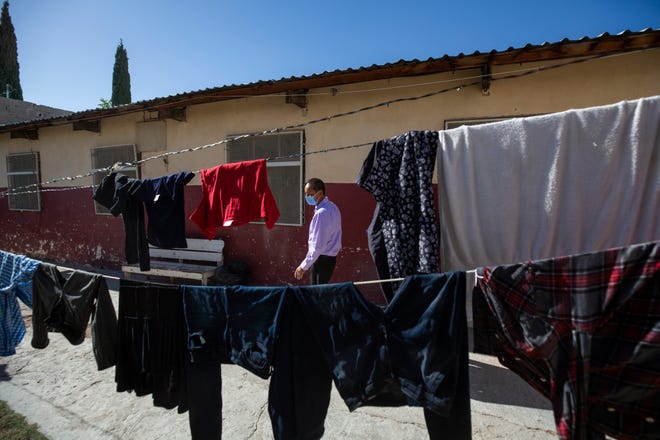
Nothing is assured: The Biden administration's decision to lift Title 42 on May 23 — and end the quick expulsion of migrants at the border — is being challenged in U.S. federal court by political rivals. In Juárez, migrant aid workers are concerned about how U.S. authorities will respond to the growing number of asylum seekers, with the future of Title 42 under litigation and uncertain.
Juárez finds itself once again becoming the crowded waiting room at the door to the United States.
"We are contending with two flows: those coming from the south and those being returned by the United States," said González, who runs Pasos de Fe and also serves as president of a network of 17 shelters in the city. "We are organized as a shelter network but our capacity is overwhelmed."
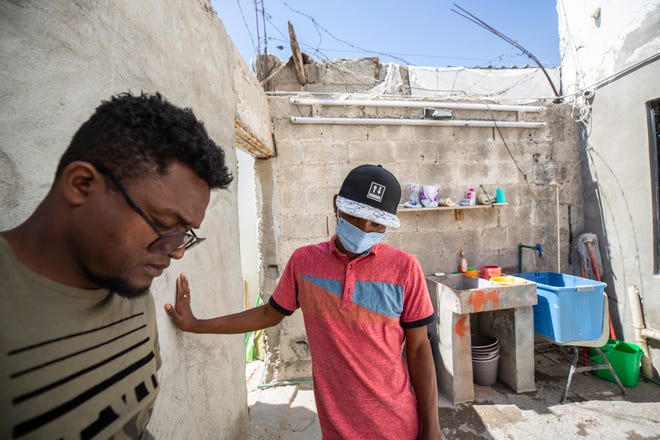
The Juárez network of shelters boasts some 3,000 beds, some housed in a converted municipal gymnasium, others in a retrofitted factory, in church dormitories and other places. They were 100% occupied in early May.
So were the 50 spots at Pasos de Fe, a modest shelter adjacent to a chapel in a neighborhood of rutted, unpaved roads named after islands. Its rooms were crammed with blue bunk beds welded together by an earlier community of Cuban asylum seekers; now they were taken by Haitian and Honduran families and adults.
"Title 42 is something that has worried everyone involved in providing assistance to migrants," said Enrique Valenzuela, director of a Chihuahua state migrant aid agency. "We expect — and experience tells us — that an important number of people are going to arrive at this border."
'People will get their hopes up'
On a recent Wednesday, as the sun climbed in a sweltering sky, a crowd of 200 people gathered outside Valenzuela's migrant aid center, the Centro de Atención Integral a Migrantes at the foot of the Paso del Norte bridge. There was a family pulling suitcases; a man with horn-rimmed glasses, his documents in hand; a pregnant women in a long dress and chunky necklace; a child leaning tiredly against the wall.
They came mostly from Haiti and Honduras, and many wanted information on how to seek asylum in the United States.
In March 2020, the Centers for Disease Control under the Trump administration issued the order that prohibited border authorities from holding migrants in "congregant settings" and provided for their quick expulsion, including those who would seek asylum.
What started as a measure to stop the spread of COVID-19 became a de facto border enforcement tool.
U.S. Customs and Border Protection has reported more than 1.7 million expulsions in the two years since the order was issued, and people who have held out hopes of legally seeking asylum have been waiting for the policy to end.
Upstairs inside the migrant aid agency, Mexico's COMAR national refugee commission had recently set up its first satellite office in Juárez. Outside, workers from Mexico's National Employment Service were helping people fill out applications for jobs in maquila assembly plants and stores.
Two Haitian men were looking for information, not a job. Mexico was too dangerous for them to live and work, they said; they wanted refuge in the United States.

"I left Haiti because of the political problems," said 30-year-old Jonathan Achelus, speaking in Spanish. He pulled out a colorful diploma from a bag of documents. "I am a student from the University of Haiti. I am here to seek political or humanitarian asylum. Many of us have family in the United States who want to help us."
Jean Mirtyl Antoine, 26, spoke in English he studied as a boy in Haiti: "I need to go to the United States," he said, "but I don't find the people to help. My country has so much political problems. And here, even the police rob you. My big dream is to cross."
In 2020 and 2021, while Title 42 has been in place, more than 170,000 people sought refugee status in Mexico, according to Mexico’s COMAR national refugee commission. Both years, Haitians and Hondurans were the top two petitioners.
The Title 42 expulsions had the effect of encouraging repeat illegal crossings, as migrants could try again and again without consequence and smuggler coyotes took advantage of the business. The end of Title 42 would reinstate the processing of migrants under Title 8, the nation's immigration law that includes consequences for crossing illegally as well a legal path to apply for asylum at the U.S. border, and smugglers may use the change to their advantage, as well.
"More people will get their hopes up," Valenzuela said. "And unscrupulous people who work in trafficking people will exploit those hopes. They’ll do what they have always done: Earn a lot bringing more people. It’s worrying."
Exceptions to Title 42
Not everyone is getting returned.
Off and on for nearly a year, CBP has processed some vulnerable migrants under limited exceptions to Title 42, including about 30 people per day at El Paso ports of entry.
Linda Corchado, interim executive director of Las Americas Immigrant Advocacy Center in El Paso, said CBP has accepted nearly 1,000 of the nonprofit organization's especially vulnerable clients through Title 42 exemptions since September 2021.
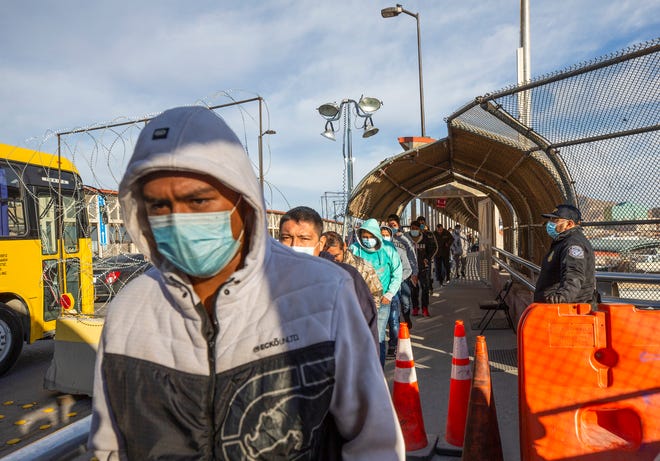
But the number of exemptions represents a fraction of those in need, she said.
Las Americas is receiving more than 700 calls per week from migrants in Juárez looking for legal assistance to seek asylum or other immigration relief in the U.S. Corchado called CBP's limited exemptions to Title 42 "arbitrary" and said she worries Title 42 may remain locked in litigation for the foreseeable future.
In April, 21 Republican-led states sued to prevent the administration from ending Title 42 expulsions. A federal judge in Louisiana issued a temporary restraining order forcing the administration to keep the policy in place and is expected to make a ruling by May 23. CBP's use of exceptions to Title 42 is also being negotiated in separate litigation led by the ACLU.
"I’m beginning to accept that May 23 will likely be like any other day," Corchado said, "and I am extremely concerned about the future of asylum."
Last summer, several of the international aid organizations that prepared the cases for people who qualified for exemption to Title 42 stopped doing so, reasoning that by processing exceptions they were prolonging the use of a policy they believed was unjust.
It was also potentially dangerous: Concerns grew that smugglers could view attorneys and aid workers as a threat to their illicit business.
CBP in El Paso reviews requests for exemptions "through a dedicated email inbox or the CBP One app," a CBP spokesman said in an emailed statement. Among the requirements, applicants must show a negative COVID-19 test and proof of vaccination against COVID-19, or agree to be vaccinated at the port of entry.
"Consistent with the CDC order, DHS continues to grant Title 42 exceptions on a case-by-case basis to particularly vulnerable individuals of all nationalities for humanitarian reasons," according to the statement.
Fleeing threats of harm, hopes for reuniting
The people at Pasos de Fe carried few possessions and many harrowing stories.
"The worst we have heard is of death threats; of women who have been kidnapped, who have been sexually assaulted," González said. "In some countries, people are threatened by their own families or have been displaced."
Two women from Honduras met on the journey through Mexico, one in her 40s the other in her 50s. Both suffered severe domestic violence by their husbands and, with their children grown, they fled. One woman said she survived sexual assault in Mexico; the other said she was held for three months against her will in Mexico and made to cook for her smugglers.
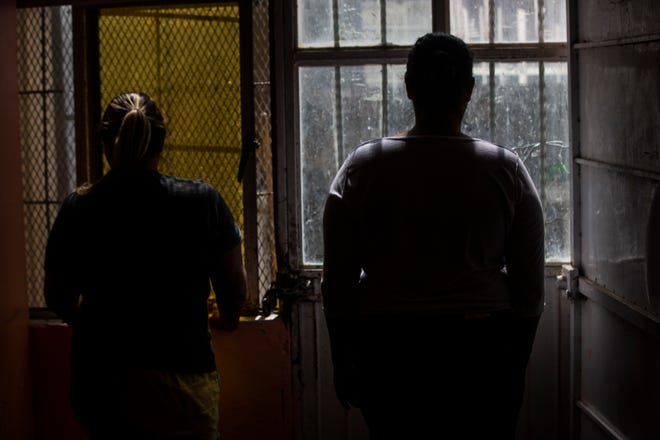
They didn't know whether they qualified for asylum in the U.S., only that they couldn't turn back.
"When my husband threatened to kill me, I didn't report it to the police because he threatened to hurt our children, too," said the woman from San Pedro Sula. "I had to leave."
Although record numbers of people have fled violence, economic despair and climate disasters in Central America in recent years, per capita, more people have left Honduras than either Guatemala or El Salvador.
Honduras makes up 28% of the three countries’ combined population but accounted for 43% of migrants from the region who came into the custody of Mexican or U.S. authorities between fiscal 2018 and mid-fiscal 2021, according to the nonpartisan Migration Policy Institute, a Washington, D.C.-based think tank.
At Pasos de Fe, Haitian and Honduran migrants sat together at the breakfast table and took care of chores. Between the chapel and the dormitories, clothes dried on a barbed wire clothesline — another relic of the Cuban asylum seekers who lived here two years ago while waiting for asylum hearings under the controversial Trump-era "Remain in Mexico" program. Some worked in a nearby metal recycling plant and put the wire to new use.
Several of the Haitian people at the shelter said they came to Mexico directly from Haiti, unlike others who first lived in Chile or Brazil and left after political changes made those countries hostile to Haitian immigrants.
The assassination of Haiti President Jovenel Moïse in July 2021 resulted in a breakdown in the rule of law in Haiti. Then an earthquake and tropical storm hit the embattled country. Gangs have taken over large swaths of the capital Port-au-Prince; according to the United Nations, schools have closed, hospitals are being looted and mass kidnappings are on the rise.

"The stories you hear are similar to what you will hear from people who have left Ukraine," said Nicole Phillips of the San Diego-based Haitian Bridge Alliance, which advocates for the Haitian diaspora on migration routes and in the U.S. "The circumstances, from a humanitarian position, aren’t that different. It is not safe for them to return."
The Biden administration has expelled nearly 20,000 Haitians to Haiti since the humanitarian crisis in Del Rio, Texas, in September 2021, according to Witness at the Border, which tracks U.S. Immigration and Customs Enforcement repatriation flights.
That is what Walky Colas, 36, is afraid of, he said in Spanish, as he joined the Honduran women at the breakfast table.
He said he owned a small store in Haiti before repeated attacks and robberies drove him to emigrate to Chile. His attempts at entrepreneurship there failed, too, after the car he saved up to buy to drive as an Uber was stolen. He and his 17-year-old son made their way to Mexico and spent months at the country's southern border waiting for permission to travel north to the U.S. border.
He couldn't escape desperation.
With Title 42 still in place, the risk of father and son surrendering to U.S. Border Patrol together was too high. Colas couldn't risk expulsion to Haiti. But if his son, a minor, gave himself up to border agents alone he could be taken in by family and could pursue a chance to stay in the U.S. as an unaccompanied child.
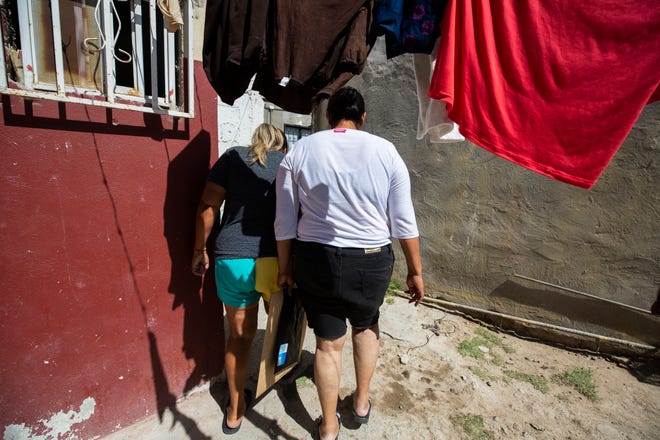
In January, he walked his boy to the edge of the Rio Grande. Colas had never parted with his son, who was now the same age he was when his baby was born.
"I told him, ‘I have no money,' and I let him go," Colas said.
The boy lives in Miami now with extended family, an 11th grader with dreams of becoming a doctor.
Colas would wait in Juárez and hold out hope for help, he said, "to cross the correct way."
DHS Border Security Pillars by David Gonzalez on Scribd
